Transport is among the most vital, but often misunderstood aspects of the NDIS funding. We West Mobility Access Provide You with the top disability transportation solutions in Australia. Each year thousands of people receive support for transport – however, most of them don’t utilize it effectively. This means they miss out on opportunities for independence as well as social engagement and higher living conditions. In this comprehensive guide for 2025 we’ll look at:
- What’s included in the NDIS transportation budget includes?
- Levels of funding and how they function
- The distinction between the two is that core transport and support worker transport
- Budgeting strategies that can stretch every penny
- Common mistakes participants make
- Transport budgeting issues specific to Melbourne
- Standards of quality and safety to be inspected prior to making your
- How do you choose the best service provider to avoid spending money
- Business insight on the booming disability transportation sector
- Future developments in NDIS transportation funding
In the end you’ll be able to figure out what you need to do to maximise your NDIS transportation allowance and get the most out of every excursion.
Why Transport Matters in the NDIS
Transport isn’t only about transferring people from one place to another, it’s about having the opportunity to access the most effective disability transport services available in Australia.
In the absence of transportation, participants have to contend with:
- Participating in Medical appointments
- Accessing jobs and obtaining higher education
- Participation in to community activities
- Maintaining social connections
That’s the reason why the NDIS offers the specific transport allowance for participants who are eligible.
NDIS Transport Funding Explained
Transportation funding is part of the Core Budget for Supports. It is accessible to those who are unable to travel on public transport due to their impairment.
Three levels of funding exist: three types in funding:
level 1: $1,784 per year
- For those who do not travel frequently
- It covers only certain excursions (e.g. appointment times, or occasional trips)
- The best for individuals with basic requirements
level 2: $2,676 per year
- For those who have moderate transportation needs
- It covers regular work trips or day programs. It also covers therapy
- It is suitable for participants who travel a lot per week
level 3: $3,456 per annum
- Maximum funding level
- For those who have dependents who are high and constant transportation needs
- It covers ongoing transportation to workplaces schools, workplaces, or medical facilities
What Does the NDIS Transport Budget Cover?
Disability transport services available in Australia , funding from the NDIS can be used to cover:
- Transport to work or school
- Community-based activities and programs
- Activities for recreation and socialization
- Therapy sessions and appointments
Transport funding from the NDIS is not able to provide:
- General cost of public transport (bus/train tickets) except for disabilities that prevent access
- The cost of travel for family members and carers
- Non-disability-related trips
Core Transport vs Support Worker Transport
One of the sources of confusion concerns the distinction between
- Basic Transport Funding Directly to the participants in order to help them manage their own transportation.
- Support Worker Transportation Costs paid when a support worker drives participant on the road or is accompanied by them during travel.
Example:
- If you book a wheelchair-accessible van through a service like Mobility Access Melbourne, you use Core Transport.
- If a support worker takes your vehicle to an appointment as well as travel time is covered under the Support Worker Transportation Costs.
Budget Maximization Strategies
Below are some ways to increase the amount of your NDIS transportation budget even further:
Plan Trips in Advance
- Make use of the weekly calendars to organize appointments.
- Do not make multiple travel plans that eat up your budget.
Choose Local Providers
- Local providers can cut the cost of travel.
- Mobility Access specialises on Melbourne travel by reducing the length of wait and unnecessary travel cost.
Use Technology
- Use apps or websites to book your tickets and save on admin costs.
- Track rides using digital technology to track the budget use.
Mix Funding Sources
- Combine NDIS’s transportation allowance with community transport schemes.
- Certain charities and councils offer additional assistance with travel.
Prioritize Essential Trips
- Always consider the medical and work and educational-related travel.
- Schedule social trips if budget allows later.
Common Mistakes to Avoid
- not tracking usage which leads to an early the exhaustion of funds.
- The choice of regular taxis instead of professional ones of which there is a lot of difficulty and a lack of reliability.
- The disregard for safety guidelines could result in injuries and waste of funds.
- Not asking for more funding in cases of eligibility.
- Making costly last-minute reservations in lieu of scheduled excursions.
Safety & Quality Considerations
Maximizing your budget isn’t only about saving money; it’s equally about staying away from unsafe providers. We provide the best disability transport services available in Australia.
Always check:
- NDIS compliant
- Driver qualifications
- Wheelchair-accessible vehicles with ramps/lifts
- Certifications of safety for vehicles
- Price transparency without hidden costs
Service providers like Mobility Access keep up with these professional standards to ensure that your money is properly and efficiently.
Melbourne-Specific Challenges
Participants in Melbourne frequently face the following challenges:
- CBD congestion is high that leads to more journeys
- Limited accessibility of accessible taxis for suburban areas.
- Weather-related challenges make boarding more difficult in winter
Solution: Pick the local professional service who understands Melbourne’s design and can provide customized solutions.
Industry Insights
- 5.5 millions Australians have disabilities
- The industry of disability transportation is valued at $15 billion worldwide.
- Growing at 7% CAGR
- Growing the amount of government investment in accessibility
This provides more opportunities for those who participate to have access to higher-quality, lower-cost services.
Technology in NDIS Transport
Technology is making budgeting more efficient:
- Booking systems for online booking minimize the number of no-shows
- Real-time tracking applications keep caregivers informed
- Automated scheduling avoids duplicate trips
- Paying cash aid in budgeting
Decision-Making Framework
When choosing a transportation provider Ask:
- Are they NDIS registered?
- Do they have accessibility-friendly cars?
- Are drivers educated in the field of disability support?
- Have they received good reviews?
- Do they provide unambiguous pricing?
Why Choose Mobility Access Melbourne?
In Mobility Access, our services are designed to maximize the value to participants:
- Affordable, NDIS-compatible packages
- Drivers who have been trained with experience
- Wheelchair-accessible vehicles across Melbourne
- Pricing that is transparent to prevent spending on the budget
- A reliable service that focuses on safety of participants
This makes Melbourne’s most dependable NDIS transport companies.
Future of NDIS Transport Funding
In the future, you can expect:
- The increase in support for funding for transportation
- Eco-friendly, accessible to electric vehicles
- Smarter AI-driven scheduling systems
- Greater collaboration between the government and communities
- Services are expanded into regional regions
Conclusion
Maximizing your NDIS budget for transport is more than cutting costs – it’s about providing safety, independence as well as freedom.
Be sure to:
- Be aware of your financial level
- Make sure you plan your trips carefully
- Choose local, professional providers
- Be sure to monitor usage
- Beware of unsafe or unconform services.
For those who live in Melbourne an organization like Mobility Access can be the difference, with reliable, professional and safe transportation, and assisting you in getting the most value from your NDIS allowance.




